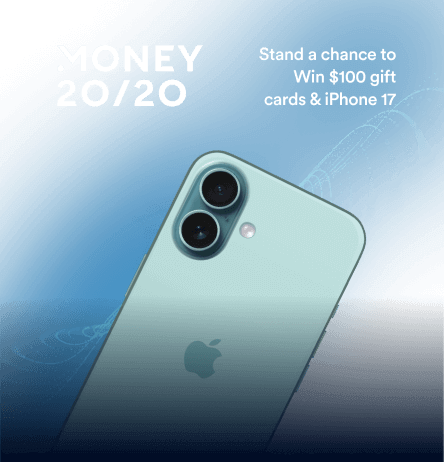Studies show experiences make us happier than physical objects.1
Studies also show companies that prioritize experiences over products/features have a 200% greater likelihood of referrals and 25% more customer loyalty.2
So no matter what business you’re in, delivering a delightful user experience to your customers might be one of the most important things you do.
For app marketers seeking to create immersive experiences, this often means finding ways to enhance people’s lives by blurring the lines between reality and the virtual world.
Continue reading to learn how top companies are creating immersive experiences or jump to our infographic for ways your company can too.
What is an “Immersive Experience?”
An “immersive experience” pulls a person into a new or augmented reality, enhancing everyday life (by making it more engaging or satisfying) via technology. They often use one or more technologies linked together. 
Immersive experiences look and feel different depending on where and how they are applied – an art exhibition vs. a mobile app AR for example – but all seek to enhance daily life through technology.
Here is some of the technology that is most frequently used to create immersive experiences.
5 Types of Immersive Technologies (+ Real-World Examples)
The technologies available to us today make it easier than ever to create immersive experiences that people love. Here are some of the most common types and examples of how brands have used them successfully.
Augmented Reality
Augmented reality (AR) uses technology (like a camera and screen on a smartphone) to add a computer-simulated layer of information on top of the real world. AR can be considered an enhancement of the world around you – rather than creating a new virtual world like VR, it simply adds (or subtracts) information that is already there.
The Skyview app is a great example of AR in action, allowing you to see where constellations are in the sky in real-time as you move your phone around:
For mobile marketers, AR is hot right now… the market has grown 106% in the last 3 years alone and is expected to grow another 20% by 2021.4
Virtual Reality
Virtual reality (VR) immerses the user inside a digital simulation they can interact with. Stimulating as many senses as possible is key to ensuring the user feels like they really are in that virtual environment. And most VR experiences (but not all) will use special hardware to do so.
Google’s Expeditions is a great example of mobile VR in action, offering users the opportunity to explore imaginary worlds:
VR has the potential to be a huge disrupter in the near future for marketers of all kinds. PwC predicts that it (and AR) could add $1.8 trillion to the global economy by 2030.5
Mixed Reality
Mixed reality (MR) is an enhanced version of AR, tying in elements of VR as well. It often integrates entire virtual objects into the real world vs. simply adding information, with the goal of creating an even more immersive experience than AR could alone.
Time’s Immersive app mixes the virtual world and the real world with objects in your home (like your kitchen table) to bring experiences to life:
Via TIME Immersive
The MR market is currently in hypergrowth—expanding at a compound annual growth rate of 71.6% according to Allied Market Research.6
Digital Twins
Digital twins are near-exact virtual models of real-life objects, processes, or systems.
They are most commonly used in manufacturing or engineering to simulate physical things for the purpose of optimizing or studying how they behave before building them.
For example, NASA uses digital twins to monitor and optimize satellites in space from the ground and Mercedes uses a digital twin to optimize the performance of its F1 cars.7
But other applications include healthcare or even digital recreations of entire cities.
360º Content
360º content is a photo or a video you can “explore.” As the name suggests, 360º photos and videos are shot in every direction at the same time and let you rotate the viewing angle to see what’s “around you” as you view the video/picture.
A great example of 360º content is how Expedia created a series of videos on different travel destinations, immersing the viewer in each location:
Via Expedia.com
Over half of marketers agree that video has the greatest ROI of any marketing content.8 360º content is an important immersive marketing tool for mobile marketers for the same reason.
Strategies That Help You Create an Immersive Experience
Making an experience more immersive is like trying to find ways to make a recipe taste better. There are lots of different ways to do it and they’re all subjective — but there are certain flavor combinations and elements that are known to work well together.
Here are some ideas and strategies that will help you create a more engaging experience with the immersive technologies above.
1. Define “The Big Idea”
What do you want people to feel? To experience? To walk away thinking?
Honing in on what the core experience should be (and should not be) makes choosing the best tech/approach much easier. Start with the “big idea” first… then choose the elements that will bring that idea to life.
For mobile marketers, it’s important to remember that flashy tech doesn’t make the experience alone. It has to truly enhance your users’ lives if you want to see lasting adoption.
2. Nail The Details
It’s often the little things that make the big experiences really shine. So when you’re trying to create a truly immersive experience with technologies like VR or AR, getting the little details right can make a huge difference.
The closer you can make it feel to the real thing, the more immersive it becomes. Things like sound and video quality, as well as seamless, intuitive interactions are the keys to taking an average immersive experience and making it great.
3. Incorporate Location-Based Interactions
Imagine walking into a store and having a discount code automatically pop up on your phone for something you were thinking about buying. Pretty compelling, right?
Marketers have been using geofencing to create more immersive experiences like this for some time. But marketing isn’t the only application geofencing or location-based interactions can be used for.
For example, Disney World combined it with AR/MR and created a game to entertain park visitors while they walk around and wait in line for physical attractions.9,10
4. Enable Multi-User Interaction
Allowing users to enjoy their experiences with others is a great strategy for making them more immersive. It also encourages referrals, which will drive additional downloads and growth for you.
Pokémon Go is an example of how multi-user play and AR combined to create an immersive experience that drove massive growth – $832 million in the first year alone.11
5. Use Positional-Tracking Hardware
Sometimes, intuitive interactions are limited by the physical hardware used to create an immersive experience. That’s where positional tracking is a great solution.
Positional tracking hardware uses sensors to assess motion and position relative to its environment – hand gestures, how you walk, and much more. This allows for more intuitive (and additional) ways to interact with the virtual world than a headset could provide by itself.
Positional tracking is difficult to implement in mobile applications because the sensors for it aren’t included in most phones.12 So it’s not something that will work for every experience.
How to Create More Immersive Mobile Experiences
Using triggered campaigns, omnichannel marketing, and other proven strategies can bring your users’ experience to life when used correctly. Learn more about creating engaging experiences for your users or sign up for a demo to learn how CleverTap can help.
Copy/paste this code to publish this infographic on your own blog:

The Psychology of Insanely Addictive Apps
Subharun Mukherjee 
Heads Cross-Functional Marketing.Expert in SaaS Product Marketing, CX & GTM strategies.
Free Customer Engagement Guides
Join our newsletter for actionable tips and proven strategies to grow your business and engage your customers.















































